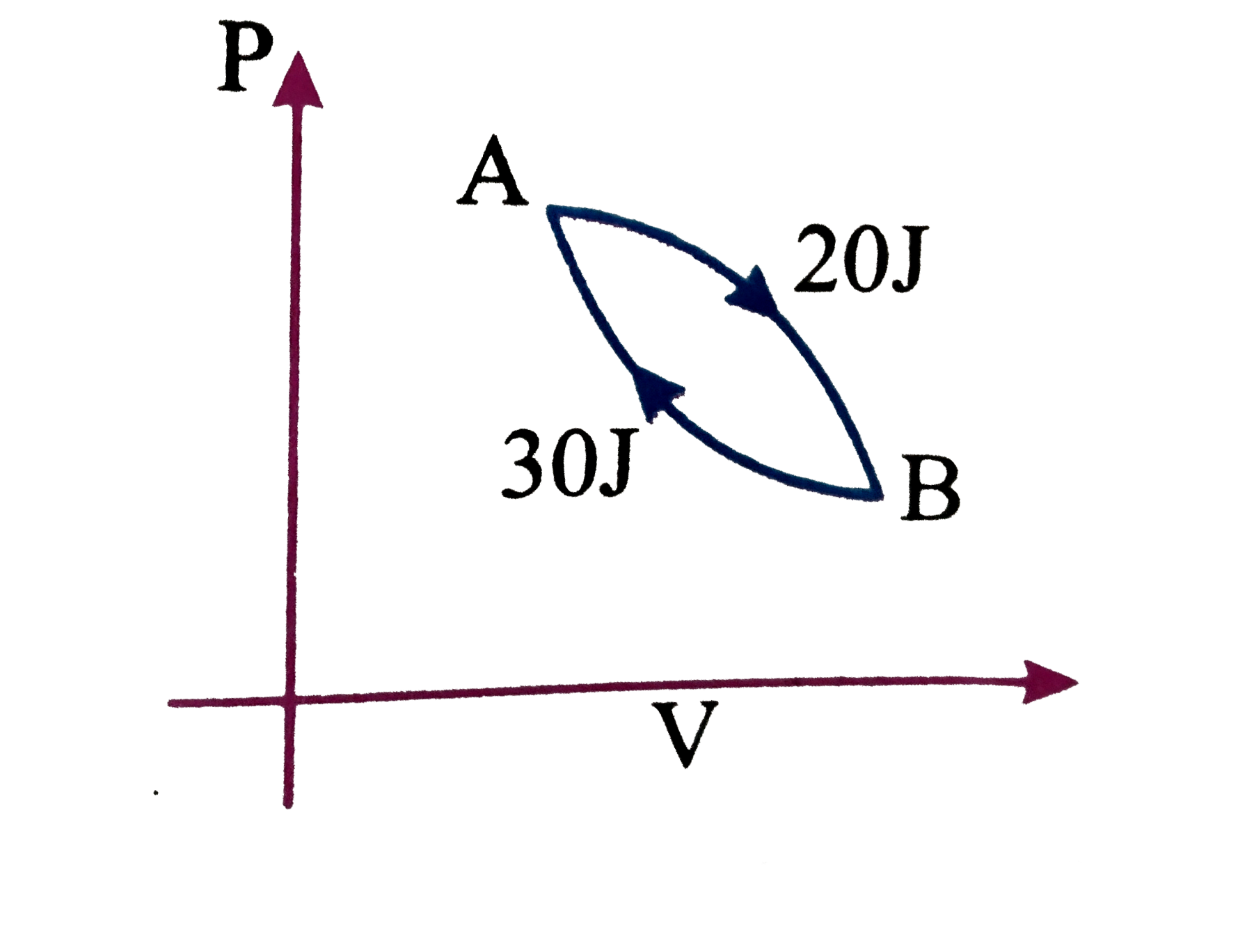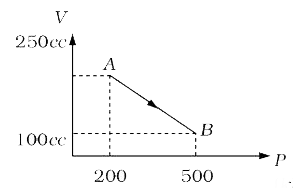If a gas is comprssed adiabatically by doing work of 150 J the change in internal energy of the gas is
a. 100 J
b. 150 J
c. 200 J
d. 250 J
The correct Answer is:B
To find the change in internal energy of a gas that is compressed adiabatically by doing work of 150 J, we can follow these steps:
Step 1: Understand the Process
In an adiabatic process, there is no heat exchange with the surroundings. The work done on the gas will affect its internal energy.
Step 2: Identify the Work Done
The problem states that the gas is compressed, which means work is done on the gas. The work done is given as 150 J. However, since the gas is being compressed, we consider the work done on the gas as negative. Therefore, we can write:
dW=−150J
Step 3: Use the First Law of Thermodynamics
The first law of thermodynamics states:
dU=dQ+dW
For an adiabatic process, dQ=0 (no heat exchange). Therefore, the equation simplifies to:
dU=dW
Step 4: Substitute the Work Done
Now, substituting the value of dW:
dU=−150J
Step 5: Calculate the Change in Internal Energy
Since we have established that dU=dW in an adiabatic process, we can conclude:
dU=−(−150J)=150J
Conclusion
The change in internal energy of the gas is:
ΔU=150J
Final Answer
The change in internal energy of the gas is 150 J.
---
In an adiabatic process, there is no heat exchange with the surroundings. The work done on the gas will affect its internal energy.
The problem states that the gas is compressed, which means work is done on the gas. The work done is given as 150 J. However, since the gas is being compressed, we consider the work done on the gas as negative. Therefore, we can write:
dW=−150J
The first law of thermodynamics states:
dU=dQ+dW
For an adiabatic process, dQ=0 (no heat exchange). Therefore, the equation simplifies to:
dU=dW
Now, substituting the value of dW:
dU=−150J
Since we have established that dU=dW in an adiabatic process, we can conclude:
dU=−(−150J)=150J
The change in internal energy of the gas is:
ΔU=150J
The change in internal energy of the gas is 150 J.
Topper's Solved these Questions
- THERMODYNAMICSBook:NCERT FINGERTPS ENGLISHChapter:THERMODYNAMICSExercise:HOTs
Explore 8 Videos
- THERMODYNAMICSBook:NCERT FINGERTPS ENGLISHChapter:THERMODYNAMICSExercise:Assertion & Reason
Explore 15 Videos
- THERMAL PROPERTIES OF MATTERBook:NCERT FINGERTPS ENGLISHChapter:THERMAL PROPERTIES OF MATTERExercise:Assertion And Reason
Explore 10 Videos
- UNITS AND MEASUREMENTSBook:NCERT FINGERTPS ENGLISHChapter:UNITS AND MEASUREMENTSExercise:Assertion And Reason
Explore 15 Videos
Similar Questions
400 J of work is done on a gas to reduce its volume by compression adiabatically. What is the change in internal energy of the gas?
View SolutionWhat do you mean by internal energy (U) of a gas ?
View SolutionIn thermodynamic process, 200 Joules of heat is given to a gas and 100 Joules of work is also done on it. The change in internal energy of the gas is
View SolutionWhen an ideal gas undergoes an adiabatic change causing a temperature change ΔT
(i) there is no heat ganied or lost by the gas
(ii) the work done by the gas is equal to change in internal eenrgy
(iii) the change in internal energy per mole of the gas is CVΔT, where CV is the molar heat capacity at constant volume.
View SolutionTemperature of two moles of a monoatomic gas is increased by 600 K in a given process. Find change in internal energy of the gas.
View SolutionWhat happens to the change in internal energy of a gas during adiabatic expansion?
View SolutionIn a cyclic process shown in the figure an ideal gas is adiabatically taken from BtoA, the work done on the gas during the process BtoA is 30,J when the gas is taken from A to B the heat absorbed by the gas is 20J Then change in internal energy of the gas in the process A to B is :

View SolutionIn a cyclic process shown in the figure an ideal gas is adiabatically taken from BtoA, the work done on the gas during the process BtoA is 30,J when the gas is taken from A to B the heat absorbed by the gas is 20J Then change in internal energy of the gas in the process A to B is :

View SolutionIn a cyclic process shown in the figure an ideal gas is adiabatically taken from BtoA, the work done on the gas during the process BtoA is 30,J when the gas is taken from A to B the heat absorbed by the gas is 20J Then change in internal energy of the gas in the process A to B is :

View SolutionA mono-atomic gas is taken along path AB as shown. Calculate change in internal energy of the gas.

View Solution